BACK TO WEATHER-BLOG MENU
The Welsh Weather & Dyfi Valley landscapes Image-Library - Click HERE
Shortly after the last update, I started full-time work at Ynyslas Dunes nature reserve - a pleasant enough occupation in a place I know well and am very fond of. An ideal spot for the weather-photographer, but only if the weather is keen to play! In the six weeks I was there, up until the end of September when the season comes to a close, the most interesting day was on the 21st, when Storm Bronagh rolled in. Lashing heavy rain persisted all day, flooding local roads and I just made it across Dyfi Bridge and home before the river burst its banks.
A rather more photogenic event occurred ten days previously. On big tides at Ynyslas, a lot of beach uncovers over low water and where the sand has been scoured away, ordnance dating back to WW2, when the area was an experimental rocket-range, is sometimes reported. Thus it was on September 11th, when a couple came into the Visitor Centre, where I was on duty, and showed me photos of a suspicious object down by the low water mark. With the new flood-tide coming on, the object would soon be covered again, but I dialled 999 and got hold of the Coastguard and emailed images down to their HQ at Milford Haven; one of their local staff came straight down for a quick look and marked the spot. The following late afternoon, Navy bomb-disposal specialists accompanied the Coastguard back to the area and the item was then destroyed in a controlled explosion.
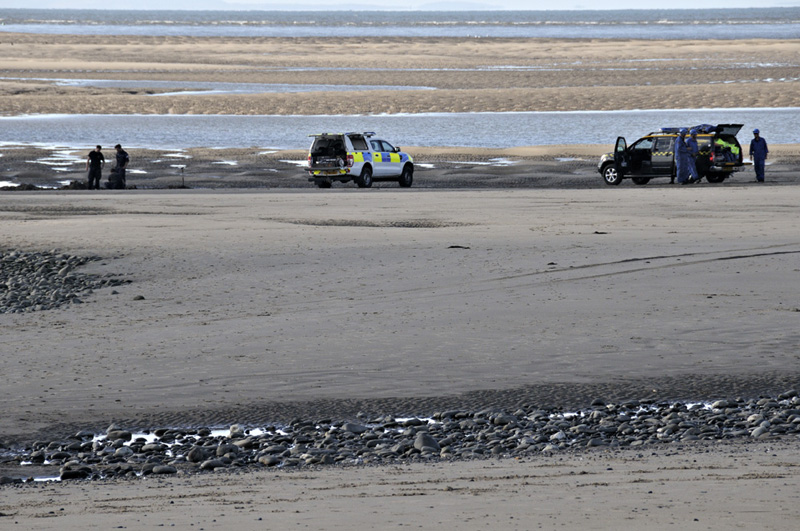
They used the opportunity to also dispose of a batch of out-of-date flares: the result was quite impressive!
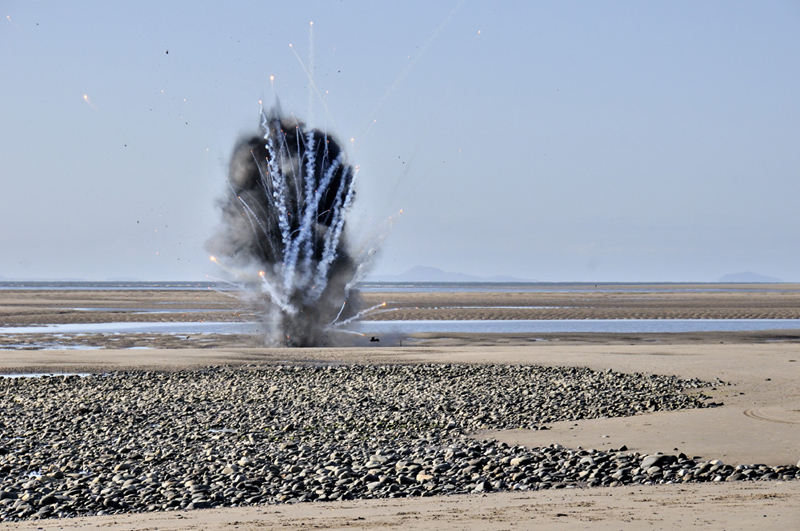
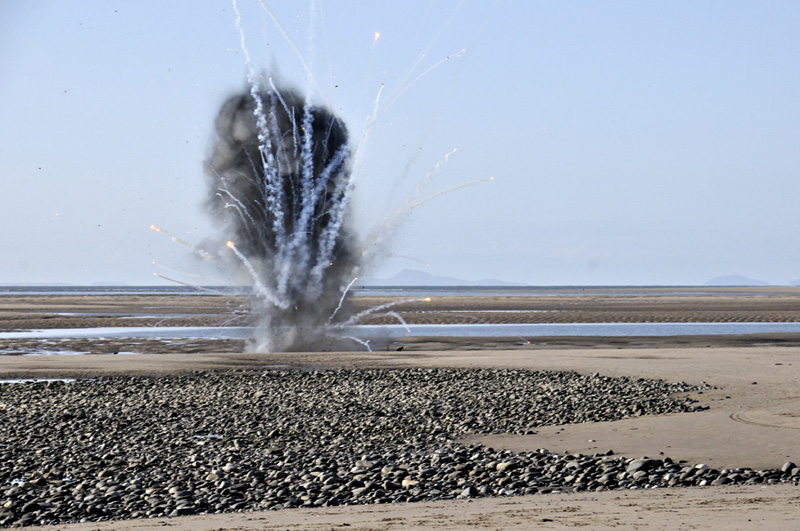
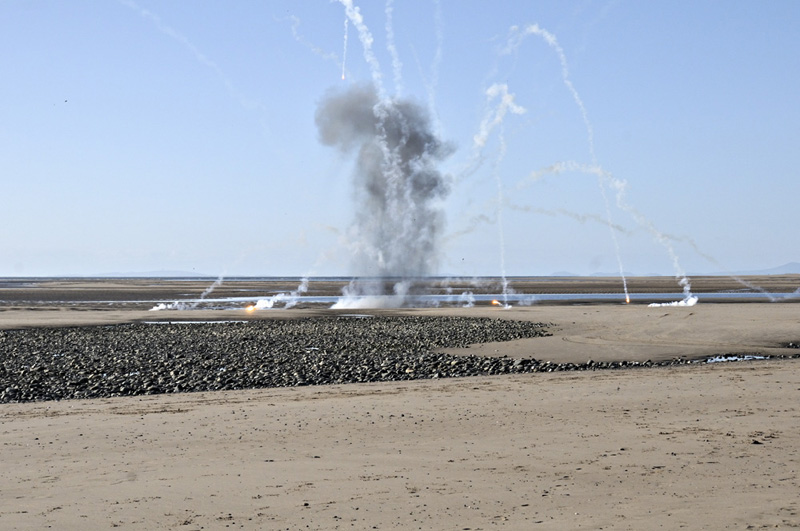
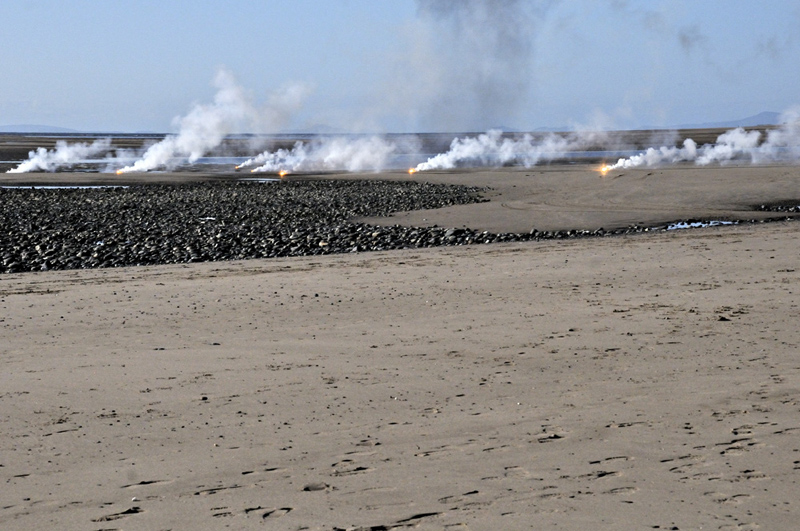
If you happen to be at Ynyslas and you come across any suspicious-looking metal items, simply call 999, ask for the Coastguard and they will attend and assess. Most if not all of the stuff is long since dead, but the precautionary principle is best applied. They have the experience to judge if an item needs further attention.
Athough much of the autumn was uneventful in terms of convective weather, November 12th did see a rather splendid storm with a rock-hard anvil sporting a canopy of well-formed mammatus. This was the first sighting near Machynlleth: the second one is from the car-park at HQ:

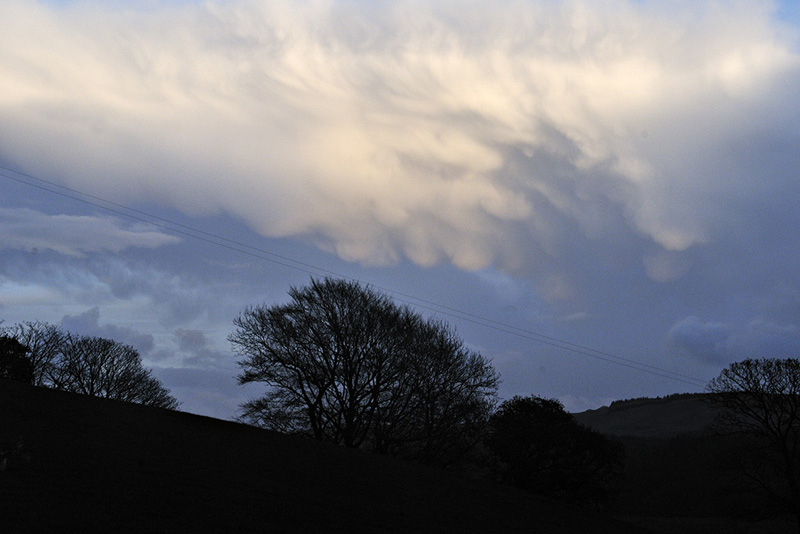
By now, vegetation dieback meant the fieldwork could resume in Coed y Brenin. This weekly fix of healthy exercise and interesting geology involved picking the best weather-days and in turn that meant some quality views of Cadair Idris and its surroundings, on the return journey. On the 15th, there was a fine display of lenticular clouds over the A487 south-west of Cross Foxes:
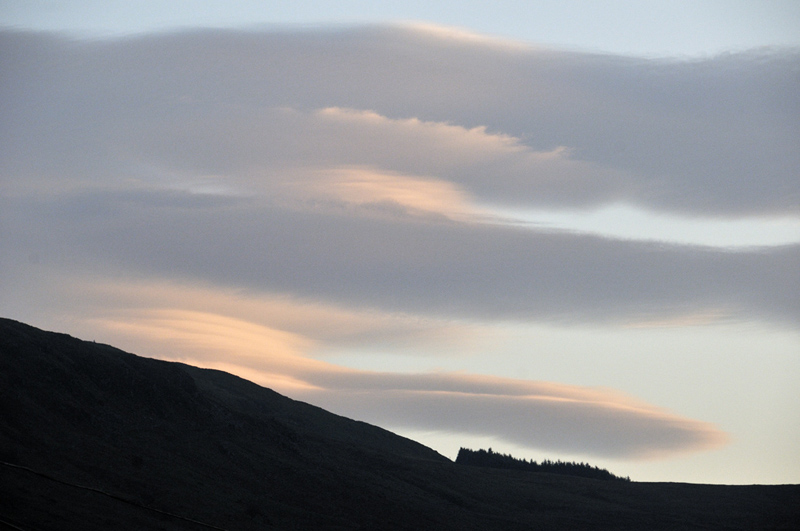
Ten days later, I was treated to this scene looking down the Mawddach Valley:
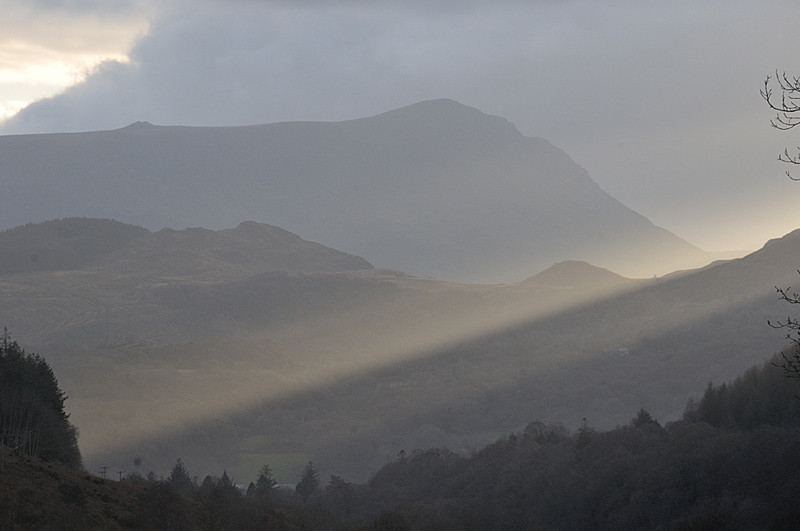
Winter came and went. It was quite unexceptional with no low-level snowfalls of note, although the hills wore a white hat on some days. The most remarkable event though was not a cold one, but the record-breaking warmth of late February. The image below was taken during fieldwork - it shows the rocky Cefn Deuddwr ridge. The high temperature and heavy scent of conifers both instantly reminded me of southern Spain at the same time of year, as opposed to North Wales!
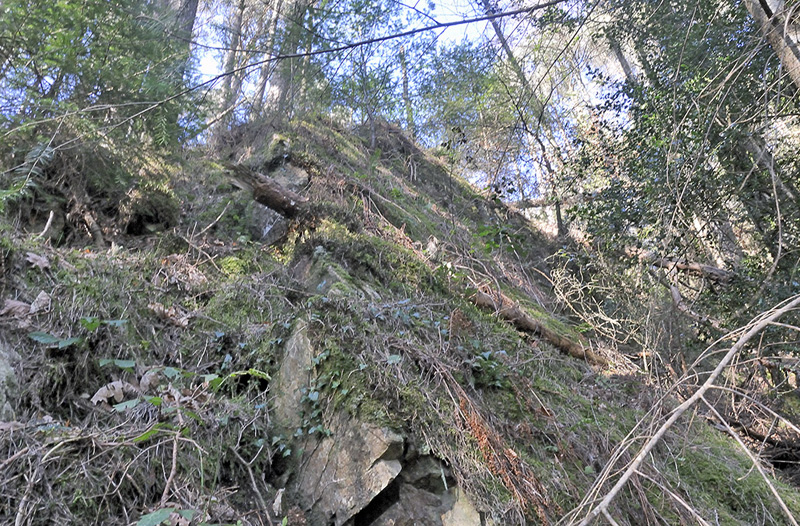
According to the UK Met Office:
"The month ended with the UK as a whole and England, Scotland and Wales all recording the warmest February day as well as the warmest winter day. 21.2C was recorded in Kew Gardens in London on 26 Feb – which is also now the UK record. 18.3C was recorded at Aboyne in Abderdeenshire on 21 Feb setting a new Scottish record. 20.8C was recorded in Porthmadog, Gywnedd on 26 Feb setting a new Welsh record. In total 21 locations in the Met Office observing network broke previous national (England, Scotland, Wales) records, some of these on multiple days. On 26 February, the previous UK record (19.7 at Greenwich on 13th February 1998) was broken as far north as Rochdale, Greater Manchester (20.4 C) and Myerscough, Lancashire (19.8 C)."
I got lots of fieldwork done, but it was just weird to see such conditions in winter. Normally the mildest conditions occur within the warm sectors of large low pressure systems that have tropical air feeding into them out to the far SW of the UK.
April arrived and with it some convective conditions. I caught this little bunch of storms down at the coast, at times masking the hills of the Llyn Peninsula with their precipitation-cores:
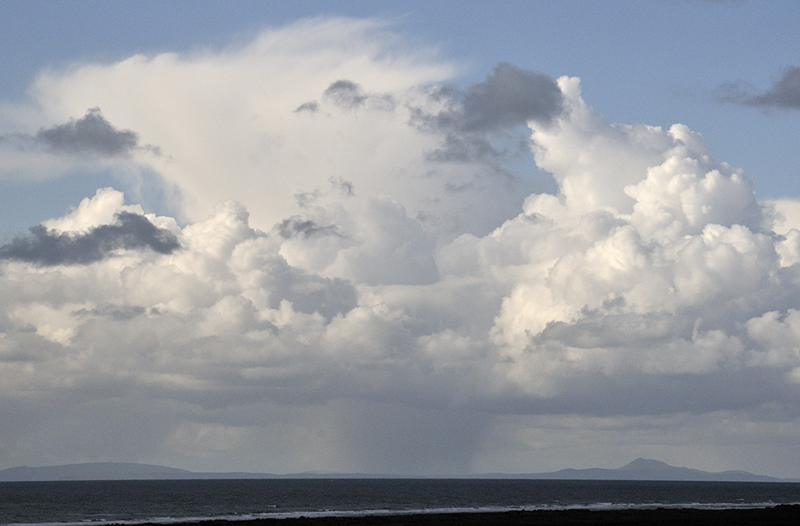

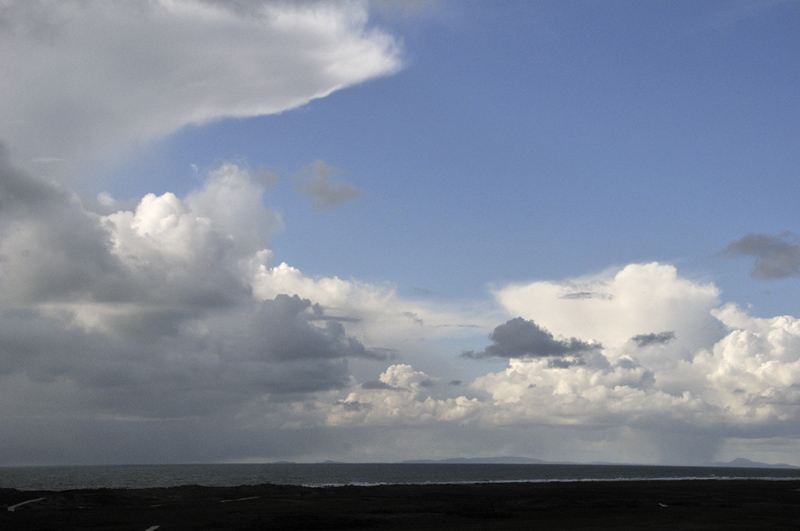
An often fine May was followed by a cool unsettled June. On May 21st, this 4-ship of Hercules transporters made several rounds of the Mach Loop, including this one straight over HQ:
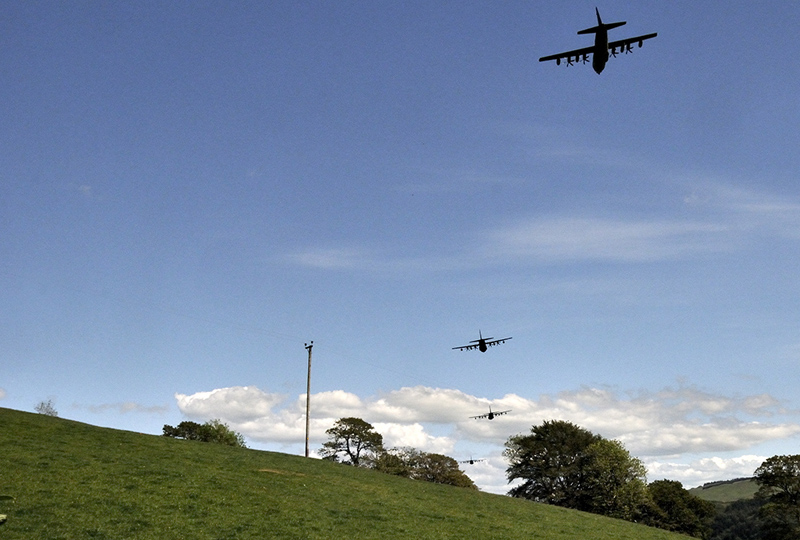
May 28th sunset down at Ynyslas was a lot better than that evening's fishing had been!
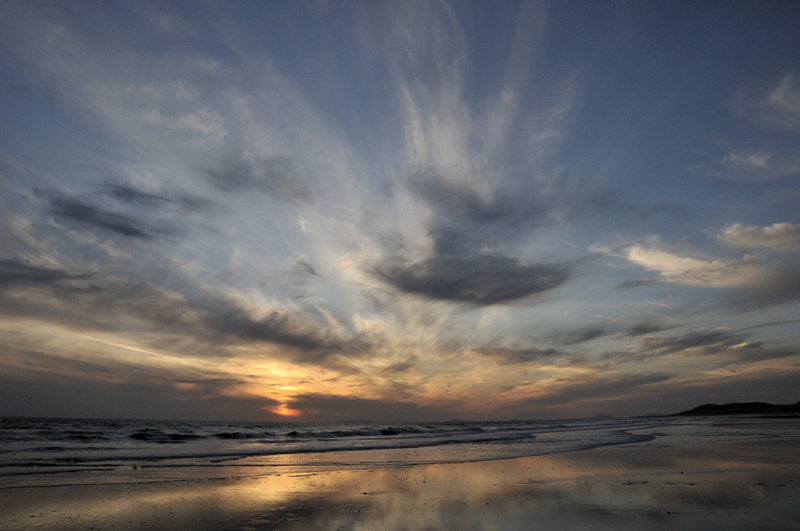
Although some parts of the UK have witnessed intense thunderstorms, the Dyfi Valley district has missed out to date. Coming into July, it's been fairly settled and warm much of the time. A guided fishing trip on July 4th provided a few interesting subjects in almost tropical scenery. This is Ceibwr Bay, SW of Cardigan:

Later the same day a bright sundog was visible, high over Strumble Head:
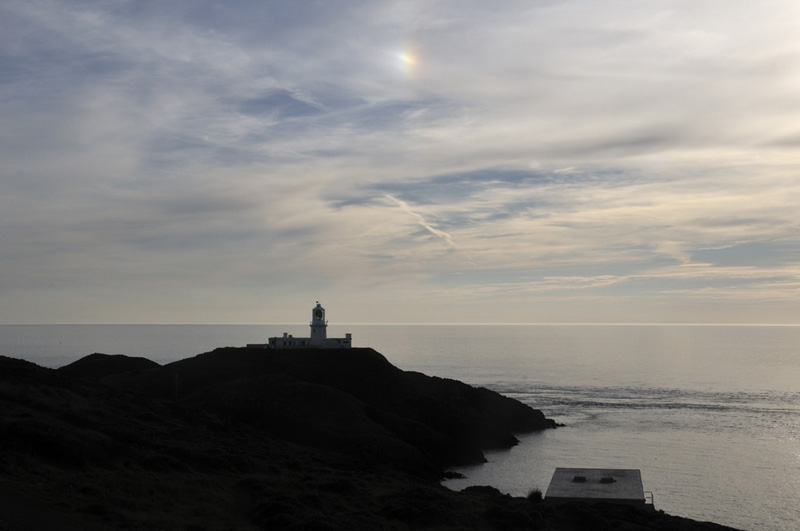
The long drive home was paused to take in the sunset, from a layby high over the sea between Llanon and Aberarth:
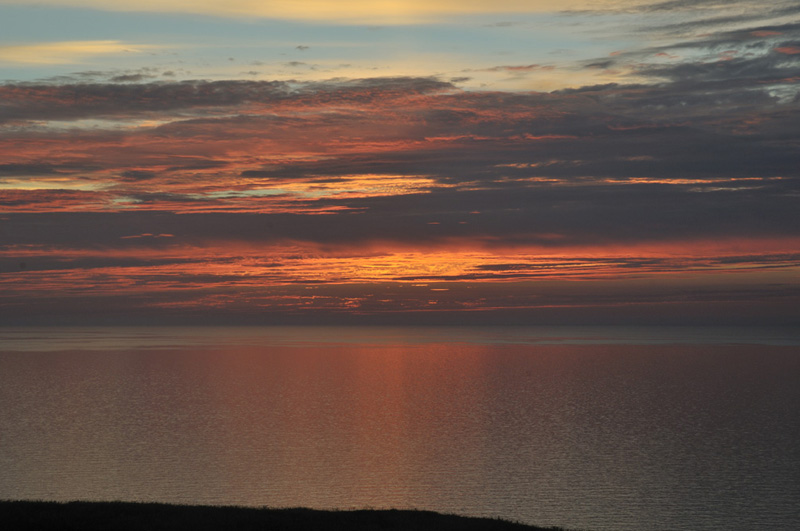
That's it for the time being, but of course if anything of a severe nature does occur, then you can expect a much sooner update.
The Welsh Weather & Dyfi Valley landscapes Image-Library - Click HERE
BACK TO WEATHER-BLOG MENU